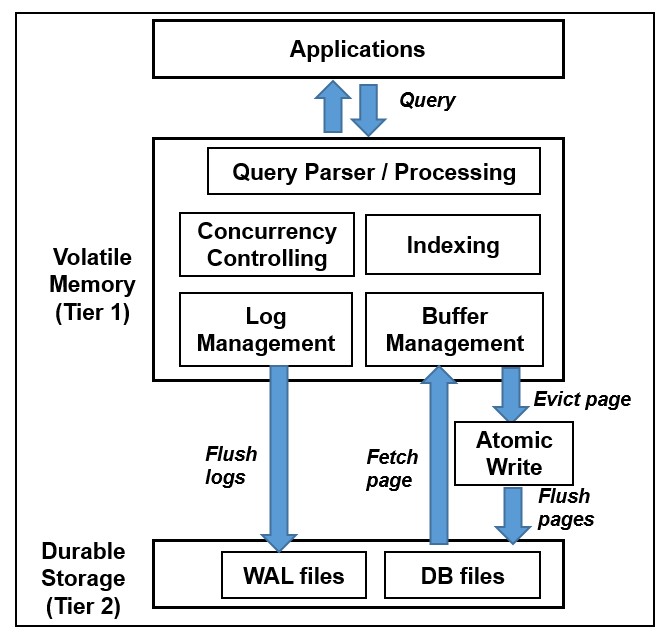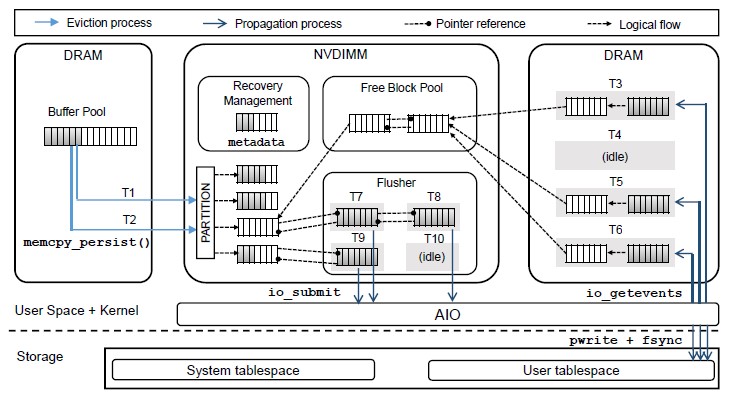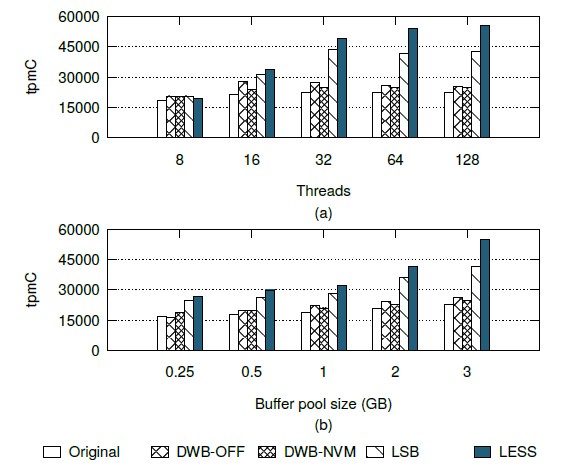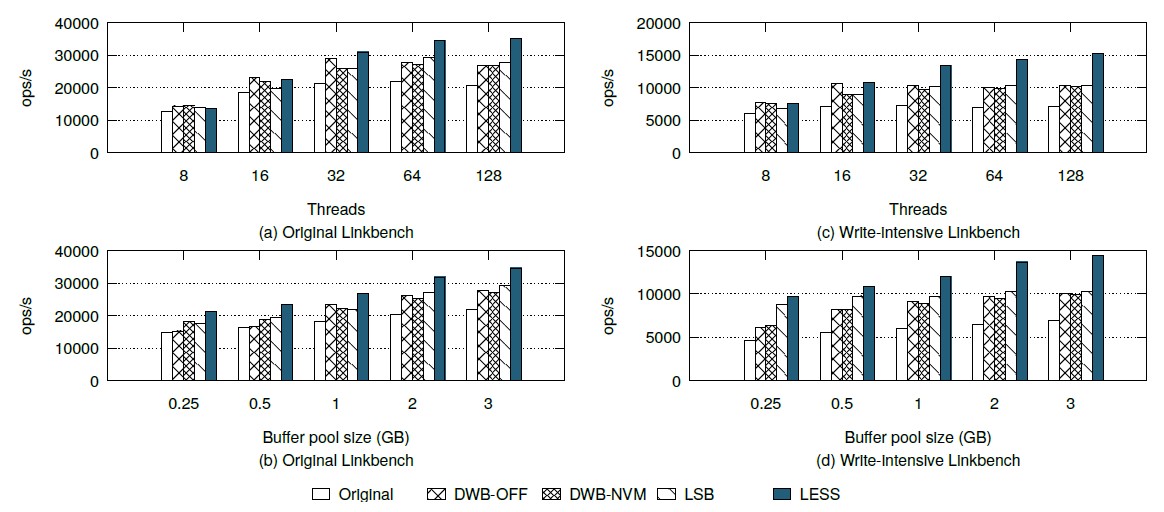PB-NVM: A High Performance Partitioned Buffer on NVDIMM
In this project, we propose and implement PB-NVM, a partition NVM-based buffer to reduce lock contention and high overhead of the centralized buffer in InnoDB. Compared to the original InnoDB, our approach improves the throughput by up to 2.47 times while reducing the flushing time per transaction by up to 7 times.
What’re Prolems
Dabase Management Systems (DBMSs) work on two-tier architecture that CPUs access on working data kept on DRAM and write updates on files located on durable storages. Below figure show DBMS’s compoents regard to two-tier architecture.

Most writes occured in DBMSs come from Buffer Management. Buffer management allocates a buffer pool in DRAM to enable CPUs quickly access to data pages without fetching them from storage device. When the buffer pool becomes full, DBMS evict dirty pages to storage devices to keep them durable. That process is mainly considered as a bottleneck due to:
- Storage devices (e.g, hard disk) have slow IOs.
- DBMSs must ensure atomicity and durability for individual evicted pages from buffer pool to storage device. That put on more overhead of the system.
One may solve the first problem easily by using fast storage device such as NVMe SSD instead of hard disks. However, the second problem is nontrivial due to:
- High lock contention. Centralized buffer pool causes high lock contention between query threads (threads update data on buffer pool) and eviction thread (thread flush dirty pages from buffer pool to storage devices).
- Redundant IOs. To ensure dirty pages are written “in-whole” to storage devices, InnoDB writes dirty pages first on douwlbe-write buffer (DBW) then writes the same copies on database tables (system tablespace, user tablespace).
- Long flushing time To ensure data durability, DBMS uses synchronized write that takes long flushing time. In other words, eviction thread hold the buffer pool’s lock until it ensures all written data are durable in the storage device. During that period, query threads which access to the buffer pool must waiting for the lock.
We propose a partition buffer on non-volatile memory (PB-NVM) to solve those problems.
PB-NVM Architecture
In PB-NVM, we use partition buffers located in NVDIMM as an extra storage layer between DRAM and SSD. When the buffer pool in DRAM is full, eviction process evicts victim pages to partition buffers using fast byte-addressable operation (e.g., memcpy). When a partition buffer becomes full, it is moved to the Flusher area and replaced with a empty buffer from the Free Block Pool. The Flusher includes of propagation processes that responsible for asynchronously flush block pages from NVDIMM to SSD. When a propagation process ensures all data pages are durable on storage device, it reset the data block and puts back to the Free Block Pool for reusing.
The figure below illustrates PB-NVM’s architecture.

Here are why PB-NVM solve the problems:
- High lock contention. We using partition buffers located in NVDIMM to allow query threads access in parallel. Each partition buffer maintains dependent lock, so there is no lock contention.
- Redundant IOs.
Experiment

